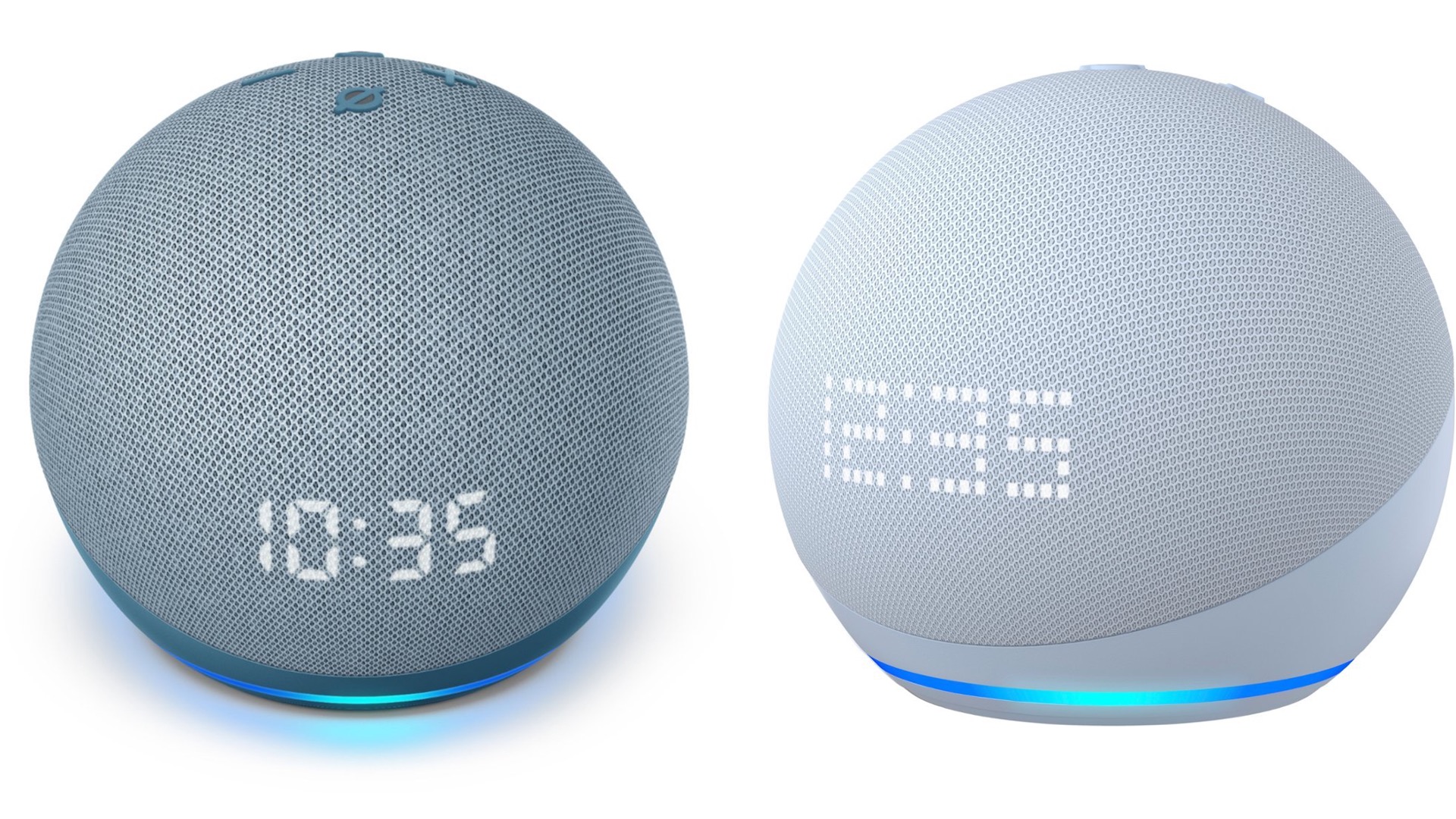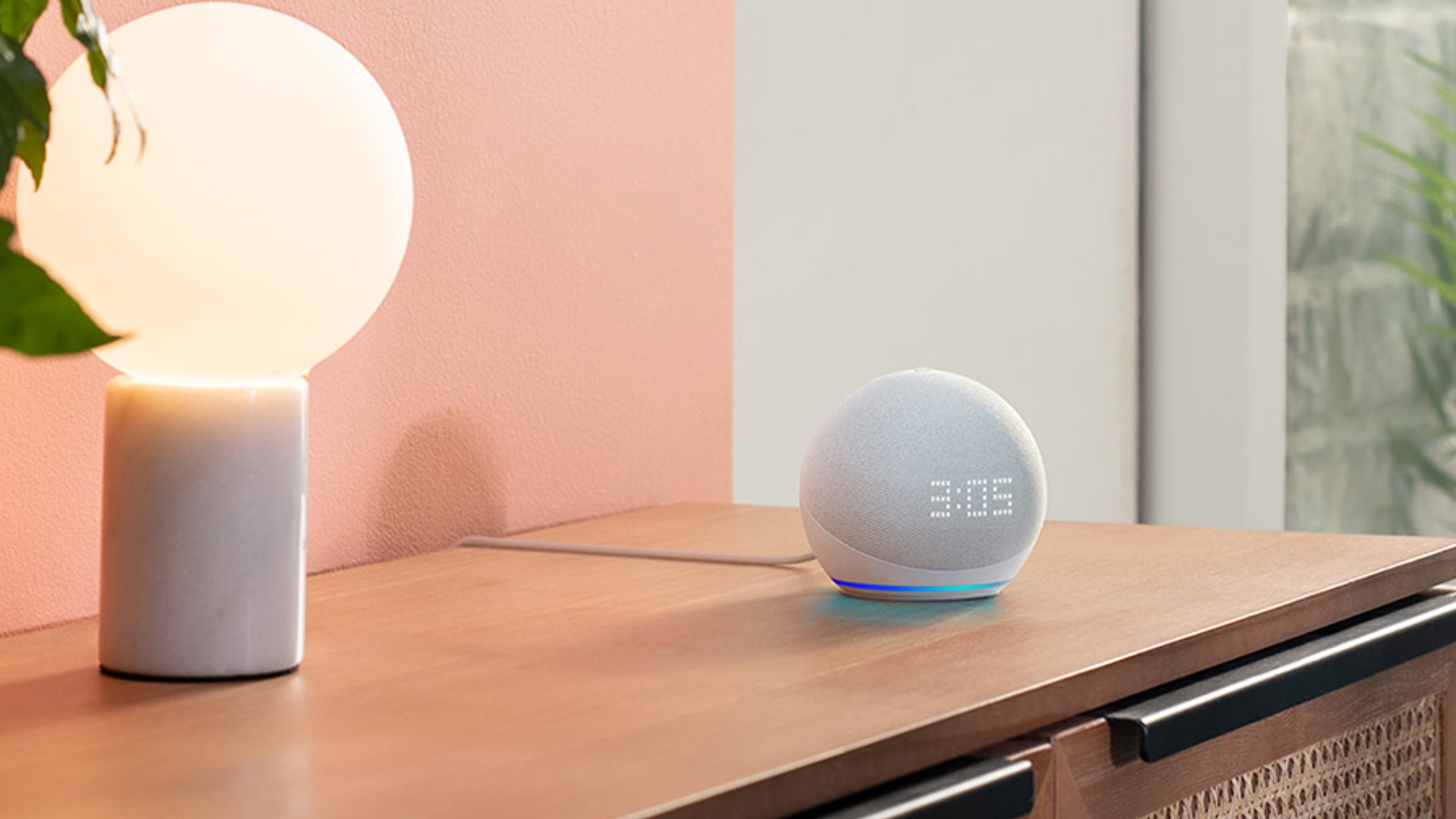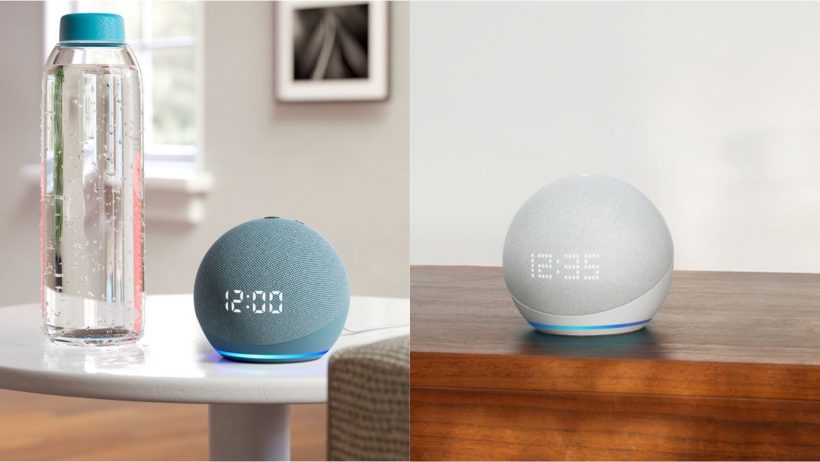The Echo Dot 5th Gen and Echo Dot 4th Gen are pretty similar speakers, with the Echo Dot 5th Gen released in September 2022 while the Echo Dot 4th Gen was released back in September 2020. While both speakers have roughly the same size and both support Wi-Fi and Bluetooth connectivity options, the Echo Dot 5th Gen is slightly more advanced and comes with an updated speaker driver together with temperature and motion-detection sensors.
The Echo Dot 5th Gen has a slightly larger speaker driver at 1.73 inches, while the 4th Gen has a 1.6-inch driver. The 5th Gen speaker sounds slightly louder than the 4th Gen Echo Dot and delivers slightly clearer highs as compared to the previous generation speaker. While the 4th Gen Eco Dot includes a power connection and a 3.5mm audio jack, while the 5th Gen only retains the power connection and drops the auxiliary connection completely. The 5th Gen is available in additional color options, including Deep Sea Blue, and offers a more detailed display in the Echo Dot with Clock variant. Both devices deliver clear sound, but the 5th Gen sounds slightly better than the 4th Gen due to its larger speaker driver and improved audio performance.
The 5th Gen maintains the orb-shaped design of its predecessor but introduces several enhancements and sensors. It incorporates Amazon’s neural edge processor, tap gestures, motion and temperature sensors, and an upgraded LED display for a better visual and interactive experience if you need to display the time.
The 5th Gen also provides smarter home integration with the ability to extend Wi-Fi signal through Eero mesh networks and utilize motion and temperature sensors for automated routines, providing a significant upgrade in functionality.
Comparing the Specs
| Specification | Echo Dot 4th Gen | Echo Dot 5th Gen |
| Design | Compact, spherical design | Compact, desktop-friendly design |
| Audio Quality | Decent sound quality for size | Decent sound quality for size, improved audio performance |
| Smart Features | Alexa voice assistant, home automation capabilities | Alexa voice assistant, home automation capabilities, temperature and motion-detection sensors |
| Driver Size | 1.6 inch | 1.73 inch |
| Connectivity | Wi-Fi and Bluetooth | Wi-Fi and Bluetooth |
| Tap Controls | Available | Tap controls and functions |
| Motion Detection | No | Yes |
| Temperature Sensor | No | Yes |
| 3.5mm Audio-Out Port | Included | Removed |
| Color Options | Various | Black, Blue, White |
| Size and Weight | 100 x 100 x 89mm, 328g | 100 x 100 x 89mm, 340g |
The Echo Dot 5th Gen is slightly heavier and has a larger woofer size compared to the 4th Gen, resulting in improved audio performance. It also offers an additional color option and lacks the 3.5mm audio output port found in the 4th Gen. The 5th Gen includes a temperature sensor and accelerometer, which are not present in the 4th Gen. Both devices have the same dimensions and similar connectivity options, such as Wi-Fi, Bluetooth.

Sound Performance
We compared both the Echo Dot 5th Gen and 4th Gen speakers side by side and played a couple of EDM, rock and hip-hop music genres through both speakers. We have to say that both speakers delivered rather average sound quality when we played a few songs through them; songs like Ed Sheeran’s “Shape of You” sounded rather flat with crisp highs but very little (to almost none) bass performance. The midranges on both speakers are average and decent for audio listening, but don’t expect any full-range sound performance from both these speakers.
While the Echo Dot 5th Gen speaker comes with a larger driver (1.73” as compared to the Echo Dot 4th Gen’s 1.6”), this does not really make any practical difference in sound quality. Both speakers can deliver relatively crisp highs with the Echo Dot 5th Gen sounding slightly louder, but they deliver roughly the same sound performance. You can also push up the volume on both speakers to maximum but they will start to sound a little distorted especially with loud music soundtracks and vocals.
Where both these speakers shine is in the quality of Alexa’s voice – you can hear it crystal clear and use it to tell you the time or weather forecast for the day. These speakers are designed more as functional speakers to notify you of the time or events of the day rather than to play music. If you want a speaker with the same level of functionality that delivers much better audio performance, we highly recommend the Amazon Echo (4th Gen) speaker as this speaker provides much better sound with a dedicated woofer and tweeter.

Design
In terms of design, both generation Echo Dot speakers share a sleek, orb-shaped aesthetic with LED base lights, though the 5th Gen offers a more detailed digital display and comes in additional color options.
For those using Alexa, both Echo Dot (4th and 5th Gen speakers) supports voice commands and routines, with the 5th Gen adding temperature and motion sensors for more sophisticated automation capabilities. This can be a rather useful feature as you can program the speaker to turn on/off the fan or other devices based on the temperature of your room. The motion sensor technology can also be used to turn on the lights when you walk into the room, which we found to be very intuitive and useful as a smart speaker.
Both speakers support Zigbee hub which allows you to control multiple devices in your home that are connected with Zigbee. They also have the ability to expand Eero mesh Wi-Fi systems which can greatly improve the network coverage especially if you are inside a room without a dedicated router. Do note that the Eero mesh extender feature is available in both the Echo Dot 5th Gen and the Echo Dot 4th Gen (newer versions). That being said, both generation Echo Dot speakers can only handle maximum Wi-Fi speeds up to 100Mbps.
The Verdict?
The main reason to upgrade from the Echo Dot (4th Gen) to the Echo Dot (5th Gen) is to use the additional temperature and motion sensors that come with the fifth generation Echo Dot speakers. In terms of sound quality, the Echo Dot (5th Gen) and the Echo Dot (4th Gen) sound roughly the same, although the 5th Gen speaker delivers slightly louder sound and crisper highs; both speakers do not have much bass and they work best as voice assistant speakers rather than for playing music. They are also both roughly the same weight and size and can be easily placed in a small corner of your room or tabletop and blend in nicely with modern home interior décor.
If you are looking for a speaker that has all the functionality of the Echo Dot (5th Gen) but works equally well as a music speaker, we highly recommend the Echo (4th Gen) instead as it designed to be both a smart speaker and for playing music.

